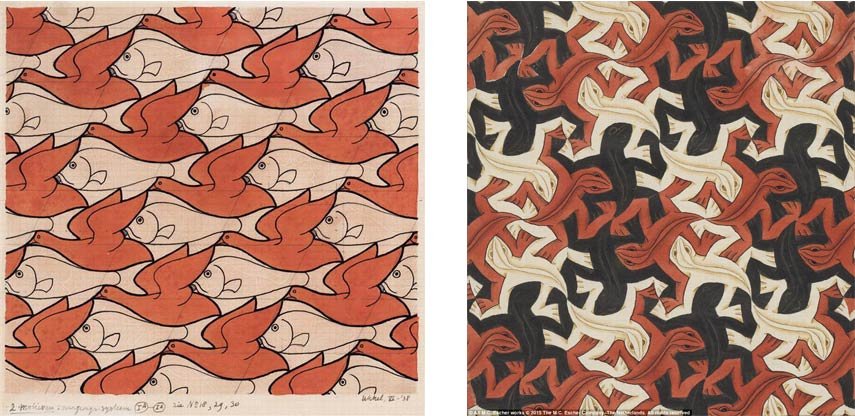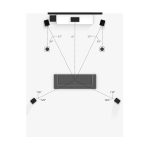Repetition in art is a powerful tool. It can create rhythm, evoke emotions, and establish visual unity. What does repetition mean in art? Simply put, it is the act of repeating certain elements within a piece to bring cohesion and significance. Through the deliberate use of patterns, shapes, colors, or motifs, artists can convey a sense of harmony and balance. This practice adds depth and intrigue to artworks, inviting viewers to explore and interpret the underlying connections.
What Does Repetition Mean in Art
Welcome to our exploration of what repetition means in art! Have you ever noticed how some artworks use patterns or repeated elements? That’s repetition in action! In this blog post, we’ll delve into the fascinating world of repetition in art and discover how artists use this technique to create meaning, rhythm, and visual interest in their works.
Understanding Repetition in Art
Repetition in art refers to the use of recurring elements within a composition. These elements can be shapes, colors, lines, textures, or even specific motifs that are repeated throughout the artwork. Artists often use repetition to create a sense of unity, harmony, or rhythm in their pieces.
Creating Patterns
One of the most common ways artists use repetition is by creating patterns. Patterns are formed when a specific element is repeated in a regular sequence. For example, think of a painting with rows of colorful circles or a sculpture with repeated geometric shapes. These patterns captivate the viewer’s attention and can evoke different emotions or moods.
Establishing Rhythm
Repetition can also be used to establish rhythm in art. Just like in music where a beat repeats to create a rhythm, in art, repeated elements can guide the viewer’s eyes through the artwork in a deliberate manner. This rhythmic flow can create a dynamic and engaging experience for the viewer.
The Role of Repetition in Art
Let’s take a closer look at why artists choose to incorporate repetition in their work.
Emphasizing Importance
Repeating certain elements in an artwork can emphasize their importance. By drawing attention to specific shapes, colors, or motifs, artists can communicate key themes or ideas. Imagine a painting where a particular symbol is repeated throughout – this repetition can signify its significance in the overall message of the artwork.
Creating Visual Interest
Repetition can also be used to create visual interest. When the same element appears multiple times in a composition, it can draw the viewer’s eye and create a sense of unity. This visual repetition can make the artwork more compelling and memorable.
Establishing Mood
Artists often use repetition to establish a mood or atmosphere in their works. For example, repeated curved lines may evoke a sense of fluidity and movement, while repeated angular shapes can convey stability and strength. The way elements are repeated can influence how the viewer interprets the artwork.
Types of Repetition in Art
Repetition in art can take many forms. Let’s explore some common types of repetition that artists use in their creations.
Regular Repetition
Regular repetition involves the exact duplication of an element at regular intervals. This type of repetition creates a consistent pattern that can be visually striking. Imagine a painting with rows of identical flowers – each flower is repeated in the same way to form a regular pattern.
Variety in Repetition
While repetition often implies sameness, artists can also play with variations within repeated elements. This approach adds complexity and visual interest to the artwork. For example, a series of repeated shapes may vary slightly in size, color, or orientation, creating a dynamic interplay within the composition.
Progressive Repetition
Progressive repetition involves a gradual change or evolution of a repeated element. Artists use this type of repetition to create a sense of movement or growth in their works. Imagine a sculpture where a repeated shape gradually increases in size as it moves upwards, creating a sense of upward progression.
Examples of Repetition in Famous Artworks
Now, let’s examine how some famous artists have used repetition in their masterpieces.
Vincent van Gogh’s “The Starry Night”
In Vincent van Gogh’s iconic painting “The Starry Night,” the swirling patterns of the sky create a sense of rhythmic movement. The repeated swirls and curves guide the viewer’s gaze across the canvas, evoking a feeling of dynamism and energy in the nighttime scene.
Yayoi Kusama’s “Infinity Mirrored Room”
Japanese artist Yayoi Kusama is known for her immersive installations that feature repetitive patterns and motifs. In her “Infinity Mirrored Room” series, Kusama uses mirrors and lights to create an illusion of infinite space filled with repeated elements. The viewer is surrounded by a mesmerizing array of reflections, blurring the boundaries between reality and illusion.
How to Appreciate Repetition in Art
As you explore artworks that incorporate repetition, here are some tips on how to appreciate this technique:
Observe the Patterns
Pay attention to the patterns created by repeated elements in the artwork. Notice how these patterns contribute to the overall composition and mood of the piece.
Follow the Rhythm
Let the rhythm established by repetition guide your visual journey through the artwork. Allow yourself to be swept along by the flow of repeated elements.
Explore the Variations
Look for variations within repeated elements that add depth and complexity to the artwork. Consider how these subtle differences enhance your understanding and appreciation of the piece.
Repetition plays a crucial role in art, offering artists a powerful tool for creating unity, rhythm, and visual interest in their works. By understanding how repetition functions in art and exploring its various forms, we can gain a deeper appreciation for the complexity and beauty of artistic creations. So, next time you encounter a piece of art, take a moment to notice the repeated elements and consider the impact they have on your experience as a viewer.
We hope this exploration of repetition in art has inspired you to look at artworks in a new light and appreciate the artistry behind each repeated element. Stay curious and keep exploring the wonders of the art world!
What Are Examples Of Pattern Repetition? – Drawing and Painting Academy
Frequently Asked Questions
What is the significance of repetition in art?
Repetition in art refers to the use of recurring elements such as lines, shapes, colors, or patterns within a piece. It serves to create visual consistency, rhythm, and unity, guiding the viewer’s eye and reinforcing the overall composition.
How does repetition enhance artistic expression?
By employing repetition, artists can emphasize specific themes or concepts, evoke emotions, and establish a sense of balance or movement in their work. It allows for the exploration of variations within a theme, leading to a deeper exploration of artistic ideas.
Can repetition in art influence the viewer’s perception?
Absolutely. Repetition can create visual interest, draw attention to certain elements, and evoke a sense of harmony or discord depending on how it is utilized. It can engage the viewer by providing a cohesive visual language that invites interpretation and contemplation.
Final Thoughts
Repetition in art serves as a powerful tool to create rhythm and unity. It reinforces concepts, emotions, and themes, making them more impactful and memorable. Through repeated elements, artists can guide viewers’ focus and evoke a sense of harmony or chaos. Overall, what does repetition mean in art lies in its ability to enhance visual interest and convey deeper messages effectively.




